One of the best kept secrets in the classic car world is just how wonderful a vintage four cylinder Plymouth is. Built from 1928 through 1932, these low priced cars were intended to compete with the Ford Model A in one of the most cutthroat automobile markets in history. With a smooth four cylinder engine that produced over 45 horsepower, hydraulic brakes, and such later innovations as floating motor mounts and a synchromesh transmission, these cars were a much better buy than a Model A. Now, over eighty years later, these cars are a bargain if you are looking for a reliable and well built Depression Era automobile. One of the nicest ones seen lately is this 1932 Plymouth business coupe, for sale on craigslist in Shallowater, Texas at the reasonable price of $14,500. Found for us by Adam C., there is just one odd thing about this coupe: it has a completely wooden interior!
1932 is probably the best year of four cylinder Plymouths to have, as you would logically think. The 196 cubic inch four cylinder engine was putting out 56 horsepower, “Floating Power” engine mounts were introduced the previous year to dampen vibration, and a synchromesh transmission came standard starting in 1932. The car in the ad is a business coupe and, according to the Encyclopedia of American Cars 1930-1942, it sold for $565. Moving up to a rumble seat coupe would cost another $45. While Plymouth’s famous flathead six would debut in 1933, the four cylinder engine moved these cars down the road quite adequately, and many current owners use them on secondary roads without causing traffic back ups.
This car’s fate was to be hot rod until the seller’s conscience stopped the carnage. It was just too nice to chop up. With what is believed to be the original engine, no rust, and possibly the original paint, thank goodness the right decision was made. Original coupes from the early thirties in this condition are becoming almost impossible to find. A mostly original 1932 Ford coupe in this condition would probably sell for over $60,000.
The only drawback is that the seller decided to commission a master woodworker to fabricate a wooden interior. While it looks nice, this is not exactly common. Hopefully the original interior pieces were saved so the next owner can use them to make a pattern. Put the original seat down on our wish list as well, because the vinyl covered later model seats are just not working out. While I am sure they are comfortable, but not the most attractive places to rest your rear on.
As you can see from the slightly fish eyed picture above, the woodworker was obviously capable. While the ad doesn’t tell us, I think it is safe to assume that the wood is unfinished. If it were mine, I doubt that I would leave it in the car. However, you can’t help but wonder what the interior would look like with a mahogany stain applied. You could likely also be assured that there would be some creaking and rubbing as the car went over bumps.
Under the hood, we see what the seller believes to be the original engine. We are told that the car runs and drives, but the carburetor will need to be rebuilt. Once corrected, this would certainly be a reliable engine. While parts are not nearly as plentiful as they are for the six cylinders in later Plymouths, there is a support group for owners. The Plymouth Owners Club has been a long time source for information concerning these cars, and parts are still available through the ads in their newsletter. A quick perusal of their forums confirms that numerous parts and a ton of information for four cylinder Plymouths is still out there.
If the car were nearby, I’d probably go look at it and consider purchasing it if the description was correct. You can’t help but like the styling of these Plymouths, and their reputation for being well built is obvious from what we see in the pictures. I doubt I would change a thing except for the interior and seats. Even then, I might drive it as-is for a bit. It certainly seems to be a car you could have fun owning.
Would you leave the wooden interior and late model seats intact if you purchased this distinctive Plymouth?



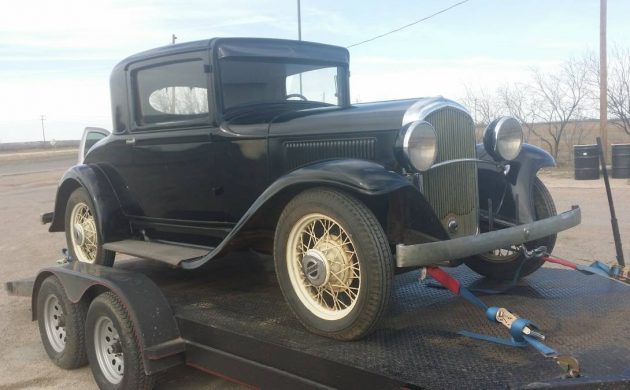
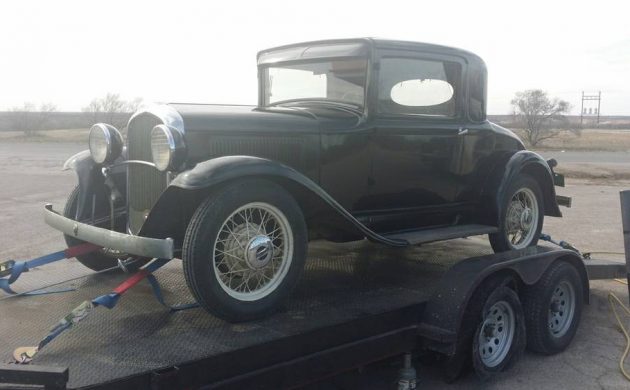
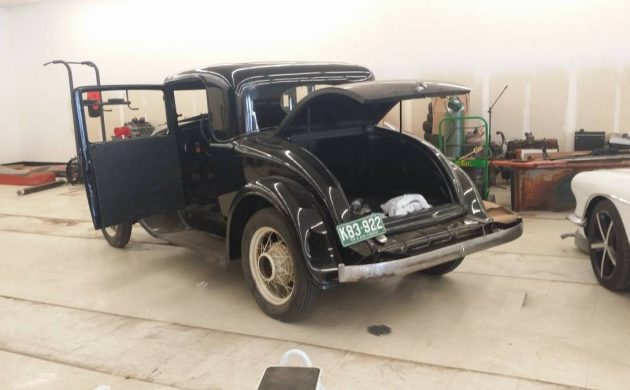

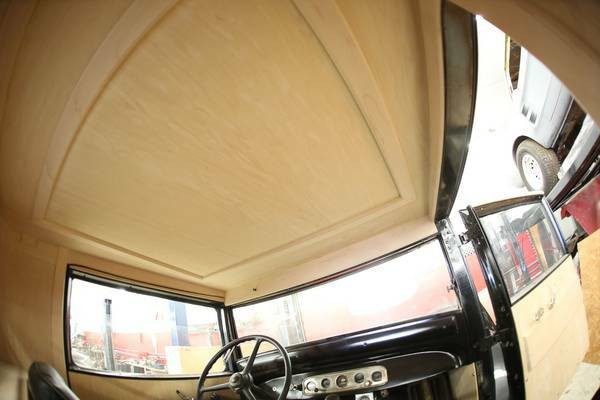

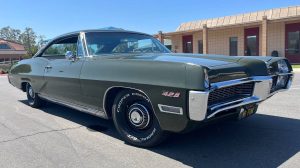
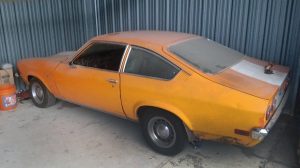
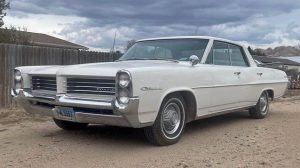
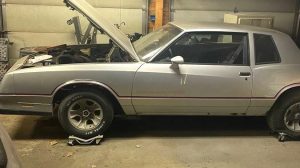


By 1920 dodge brothers were using Budd bodies made of all steel. I wonder if that was also true of Plymouth. I love the interior and would go with a cherry stain. But before I did that I’d do wood veneer inlay patterns in oak and I’d do a wicker weave panel for the roof. I also have no problem with the seats and would leave them in. I love wood on a car and if done right will give a car a very rich and elegant look. Man do I like this car I sure hope it goes to a good home.
Yes. the 1932 Plymouth had an all-steel body. Budd was an early builder of all steel bodies (touring cars), and were backed by the Dodge Brothers financially. Those steel presses were not cheap, and was the main reason many body builders did not, or could not, afford switching to all steel.
In 1929 Briggs Body became the main supplier of bodies for Plymouth. The first Plymouth, model Q, had bodies built by Briggs and Hayes.
One of the last builders of wood frame, sheet steel bodies was GM’s Fisher Body. Their first all steel bodies appeared for 1937 – the A (Chevrolet) and B (Pontiac, Oldsmobile, Buick 40/60, LaSalle) bodies.
The larger bodies would switch to steel for 1940 – C (big B O P series, LaSalle 52, Cadillac 62) and D (Buick 90, Cadillac 67) bodies.
My dad loved these……..they were so much better than the period Ford…..it forced Henry to improve his product line.
This is a 1931. A 32 has a hood that covers the cowl. The dash is a 31. Great cars. I have 5 early plymouths.
Wern’ These called a P……something? (PB, whatever?)
You are correct Richard! I have a 31 Plymouth PA also. Last year for the headlight bar.
31- pa
32- pb
I borrowed one of these many years ago as a wedding car and when returning it to the owner I suggested to him that Henry should upgrade the Model A to a six cylinder as well, then maybe it would be nearly as good as the Plymouth. Was I surprised when he told me that it was in fact a four cylinder motor. I didn’t believe it until he opened the hood and saw the engine with my own eyes.
I like it! I hope if anything is done to it, it’s done in such a way that it can eventually be taken back to original
Glad this one was saved from the rodder’s torch. Don’t get me wrong, I’d love to see what could be done with one of these – just not one this nice. This car is excellent as is. Well, except that wooden interior. Sorry, it needs to go.
When I was in high school back in the early 50’s, a classmate had one of these, but the sedan. He wanted it to sound special, but he couldn’t afford a glass pack muffler. So, he cut 12-inch lengths of bicycle tubes and clamped them on to the end of the tailpipe. neat sound!
That was my first car, a 1932 Plymouth “pb” with rumble seat and mohair interior, in my senior year of high school. Bought it for $25 and sold it a couple of years later for $75. What a deal! I was the envy of the class of ’51 at the time. The last of the 4-cylinder Plymouths, it was “Floating Power”, and that engine rocked like a baby crib. It had pistons as big as hub caps. Always tried to get 75 mph out of it, but best was 73. And because of the attempts, it would blow the top of a piston off at the ring groove. I rebuilt that engine almost every weekend. Wished many times I had that old Plymouth back again.
The woodwork looks competently but not artistically done. It’s hard to say, just seeing the pics on my phone. I’d be inclined to redo it though. The car looks too nice not to return it to something more stock-appearing.
Yes, this Plymouth is a PA – the oval rear window is a giveaway. The PB had a rectangular rear window.
It is, however, a 1932 model as the PA went into production in late May, 1931. Many companies declared the new model year began at the beginning of July and ended at the end of the following June. But Plymouth treated the PA as an early 1932 model, introducing them to the public on July 11, 1931 and being augmented by the PB in February, 1932. The PA continued as the lower priced Thrift series. The public introduction of the PB was in late March, 1932.
Chrysler Corp began production of the 1933 model year in November and December 1932, and ended 1933 in October to December 1933, depending upon the make and model. Since then Chrysler has followed an August to July model year for most years.
I am sending this from Australia.
I have a 32 DM Dodge which is a rebadged PB. Chrysler exported 1172 CKD chassis minus bodies via Canada to the British Commonwealth countries to avoid some local taxes. (If you do some Googling you will find a few have returned to the US).
The DM was assembled and the body made by the TJ Richards Company in Adelaide which was later taken over to become Chrysler Australia.
The DM uses the flat PA grill but PB running gear with the 196cu/in engine with freewheel & vacuum clutch. (The PB grill is rounded).
Also, any reference on the DM as a Plymouth was removed. The DM has its own engine number series; the hubcaps show Dodge; and, all the bolt heads about the car have Dodge stamped on top of them. The Dodge Ram mascot was fitted to the top of the radiator instead of the Plymouth mascot.
In regard to the Floating Power, there are only two rubber engine mounts (I think you use the word support and not mounts as we do). One mount is under the water pump and the other at the end of the gearbox. If a line is drawn between the two mounts it dissects the engine mass so there is an equal mass on each side. The engine torque is counteracted by a small leaf spring from the engine to the chassis. This is why they appear to rock or float.
The gearbox is not synchromesh. It has a sliding gear on first & reverse and the ‘new’ helical gears on second & third but no syncro.
As others have said, the car here is the PA. The giveaway for me is the external sun visor over the windscreen. When the curved edge bodies were released such as the PB, the first internal fold down sun visors were fitted and remain the same on today’s vehicles. Internal sun visors were advertised as a ‘new’ feature for the era. Another new feature were ‘silent’ rubber bushes in the front eye, of the rear suspension leaf spring.
Another giveaway is the light support bar between the two front mudguards. This was dropped in 32 for the PB/DM and the lights were bolted directly to the guards.
Also, I think the PB/DM has a slightly longer stroke crankshaft for 196cu/in to produce 65bhp whereas the PA has about 176cu/in or so. The engine here has a silver painted cylinder head and I think the Silver Dome with 5.6 :1 compression head was offered as an option to the 4.9 :1 ratio. I have never been able to find this out exactly but the Chrysler cars had this option.
The car featured here is missing its half-flow oil filter canister which should be bolted near the horn in the engine photo.
Does anyone know if a thermostat was fitted under that tall bell shaped housing bolted to the head that the top radiator hose is attached to? I note that most of the US cars have this tall housing whereas here in Oz we don’t have snow expect in one or two places, the housings are smaller without a thermostat.
I need a new Pitman arm for the steering box. Does anyone know the whereabouts of one. They are the same for RHD & LHD.
The Plymouth 30-U, PA, PB and the Dodge DM all used the 196.1-cid 4 cylinder engine with the 4.75″ stroke. The engine with a 4.25″ stroke (175.4-cid) was used on the Plymouth model U while a 4.125″ stroke (170.3-cid) was used on the Plymouth Q and Chrysler model I.
The PA compression ratio was 4.9:1 and put out 56bhp. For the PB, the base engine was the same as the PA but they offered an optional 5.6:1 ratio (Red Head engine) with 65 bhp.
In 1931 Canada changed the import duty calculations by giving credit for Canadian input. Thus Hudson, Packard, Graham, Hupmobile,, and Reo all started assembling cars in Canada. GM, Ford, Chrysler, Studebaker, Willys-Overland, and Durant/Frontenac had been assembling cars in Canada for years.
Basically, the value of the imported items were tallied up and the value of the Canadian content (parts, paint, labour, etc.) were applied against import value, and the import duties computed. Thus Chrysler of Canada could import DM chassis and ship them to Australia. The reduced duties on importing the DM chassis and the low tariff agreement amongst the Dominions saved Chrysler money. Items shipped from the U.S. got hit with full tariffs upon arrival in Australia.
By the way, the grille shells were shipped to Australia unplated. Chrome plating was done in Australia. And the DM radiator shell is not the same as the PA or PB. Also the DM front fenders and hood were unique and are not the same as the PA and PB. The RHD DM chassis frame is the same as used on the RHD PB, but the LHD DM chassis is not the same as the LHD PB.
Thermostats were used on 30-U, PA, PB and DM. The DM used the same instrument gauges as the 1932 DL six
Chrysler Historical listed the production of DM models as –
4dr Sedan – 760
4dr Phaeton – 92
2dr Roadster – 54
2dr Convertible Sedan – 48
4dr Station Wagon – 1
Chassis – 235
Total – 1,190
Serial numbers, though, began at 9,905,001 and ended at 9,906,173, for a total of 1,173.
Car serial numbers 9,900,001 to 9,949,999 were usually cars built in Detroit for export (DE, DI, DM).
I AN IN NEED OF A AIR FILTER FOR 1932 PB.
rwenhold@mac.com — 215 257 8258
Roger.